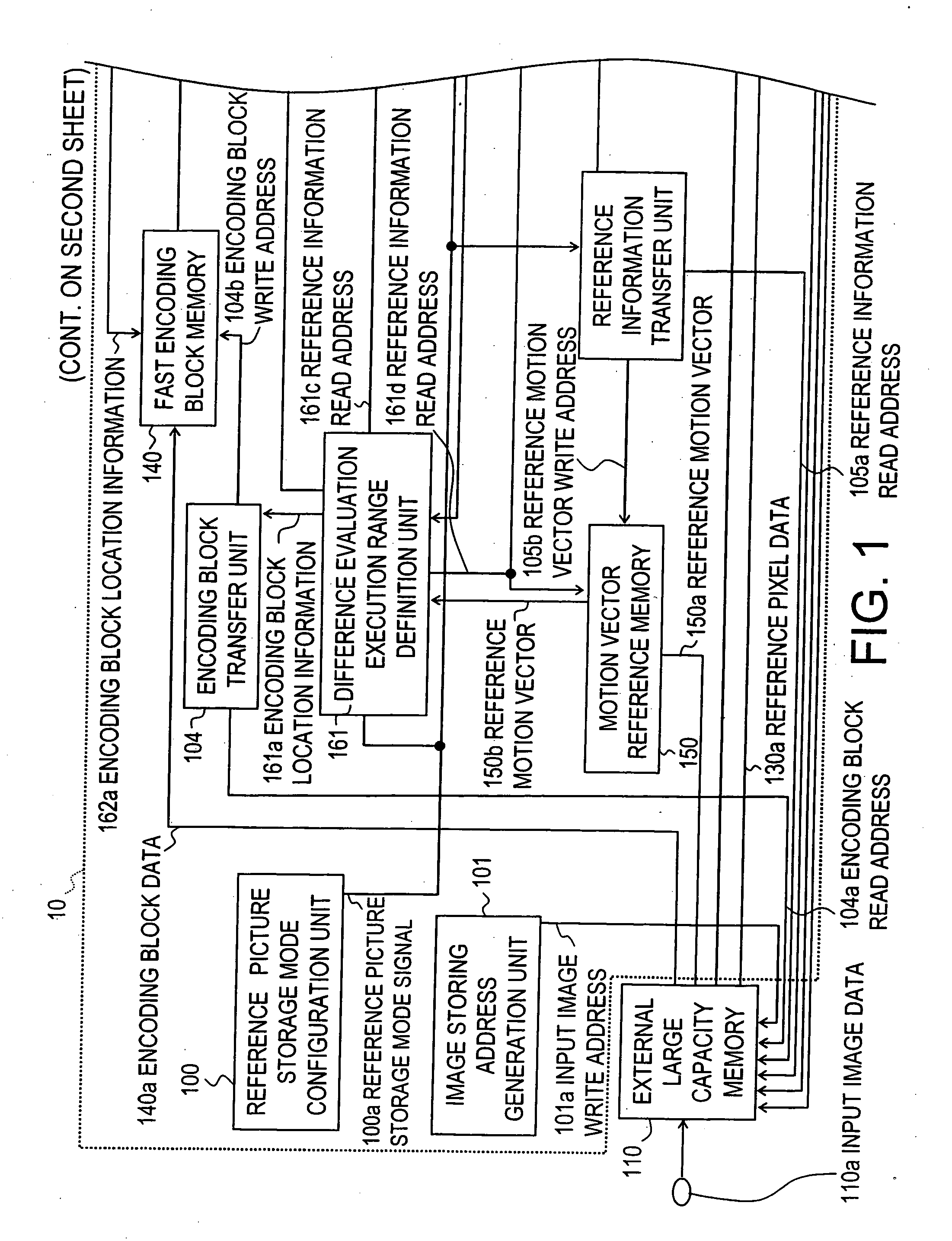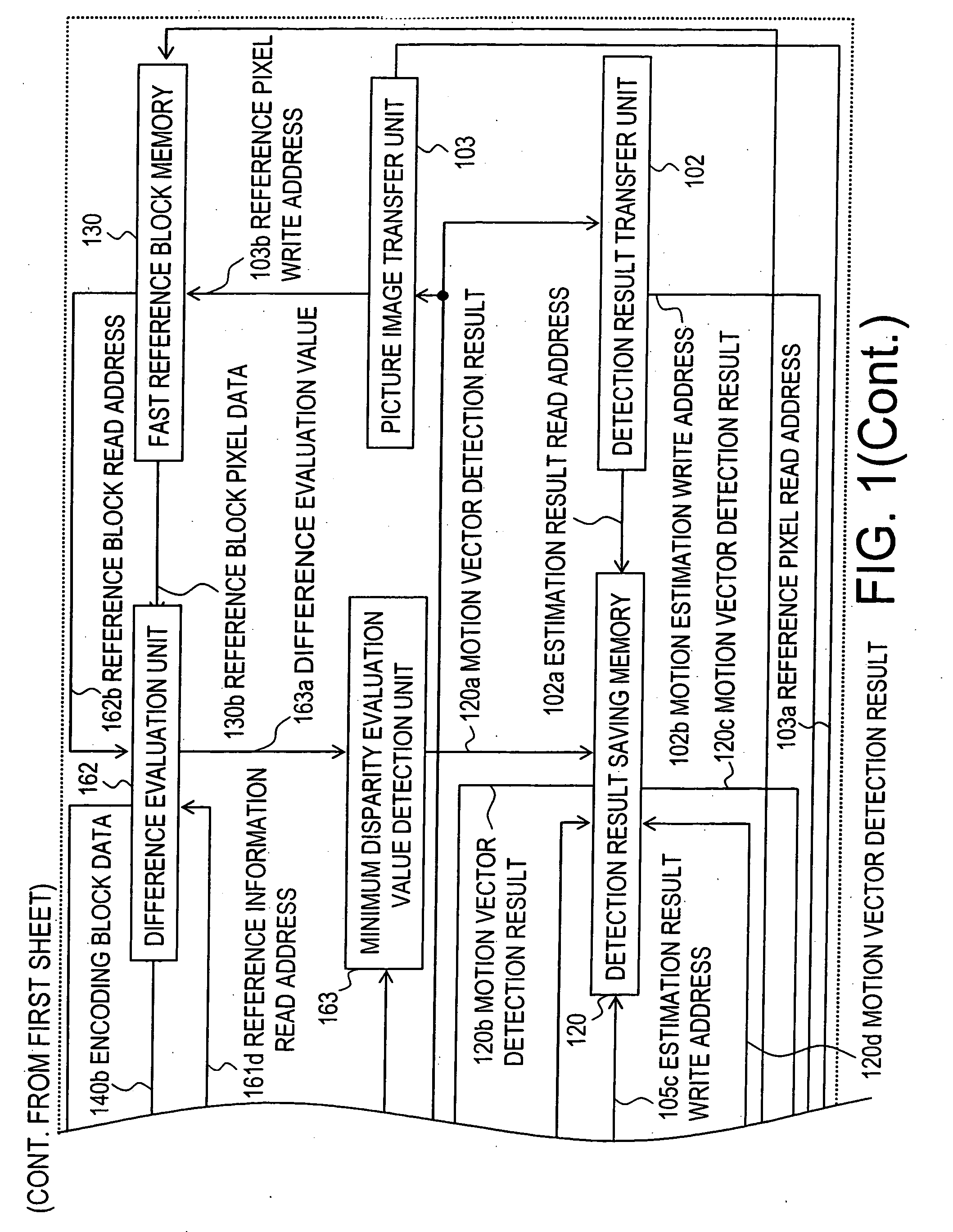Motion vector detector, method of detecting motion vector and image recording equipment
- Summary
- Abstract
- Description
- Claims
- Application Information
AI Technical Summary
Benefits of technology
Problems solved by technology
Method used
Image
Examples
first embodiment
[0053]FIG. 1 illustrates a motion vector detector according to a first embodiment. The motion vector detector 10 is applied to a moving image encoding system using motion compensated prediction.
[0054]FIG. 2 is a block diagram showing a first specific example of an MPEG encoder comprising the motion vector detector 10 of the invention.
[0055]FIG. 3 is a block diagram showing a second specific example of an MPEG encoder comprising the motion vector detector 10 of the invention.
[0056] More specifically, the MPEG encoder shown in FIGS. 2 and 3 is a moving image encoder that compresses the amount of information using motion estimation information obtained by the motion vector detector 10 shown in FIG. 1.
[0057] First, these MPEG encoders are described. As shown in FIGS. 2 and 3, the MPEG encoder comprises an input image memory 910, aME (Motion Estimation) unit 10, aMC (Motion Compensation) unit 920, a DCT (Discrete Cosine Transform) unit 925, a quantization unit 930, an encoding / multip...
second embodiment
[0117] In the first embodiment, motion estimation per frame as shown in FIGS. 4 and 5 was illustrated. In the second embodiment, in the motion vector detector shown in FIG. 1, motion estimation per field as shown in FIGS. 27 and 28 will be illustrated.
[0118] The input image data 110a is written and saved at a location in the external large capacity memory 110, the location being indicated by an input image write address 101a generated by the image storing address generation unit 101.
[0119] First, the reference picture storage mode configuration unit 100 determines whether the picture to be encoded is a bidirectional prediction encoding picture (B-picture) that is allowed to use motion vectors from both of temporally past and future pictures in the display sequence. On the basis of the determination result, the reference picture storage mode configuration unit 100 generates a reference picture storage mode signal 100a that defines a reference pixel storage mode of the fast referenc...
third embodiment
[0213] As a third embodiment of the invention, image recording equipment comprising the motion vector detector according to the invention will now be described.
[0214]FIG. 29 is a block diagram showing a configuration of the image recording equipment according to the embodiment of the invention. More specifically, FIG. 29 illustrates image recording equipment having the capability of recording and reproducing various moving images including television (TV) broadcasts.
[0215] The image recording equipment 1000 comprises a recording / reproducing unit 1104 for recording video information of an inputted or received moving image on a given recording medium and reproducing compressed video information that has already been recorded according to a user's direction for reproduction. The image recording equipment 1000 also comprises a main controller 1105 implemented by a microprocessor (MPU) for controlling the operation of recording to and reproducing from the recording / reproducing unit 110...
PUM
 Login to View More
Login to View More Abstract
Description
Claims
Application Information
 Login to View More
Login to View More - R&D
- Intellectual Property
- Life Sciences
- Materials
- Tech Scout
- Unparalleled Data Quality
- Higher Quality Content
- 60% Fewer Hallucinations
Browse by: Latest US Patents, China's latest patents, Technical Efficacy Thesaurus, Application Domain, Technology Topic, Popular Technical Reports.
© 2025 PatSnap. All rights reserved.Legal|Privacy policy|Modern Slavery Act Transparency Statement|Sitemap|About US| Contact US: help@patsnap.com



